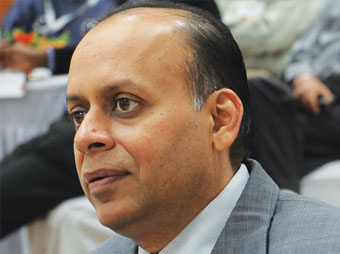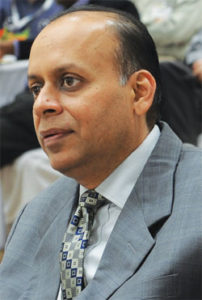
www.mit.gov.in
A bottom up approach for urban governance though effective use of ICT will ensure enforceability and transparency in public service delivery

Dr Ajay Kumar, Joint Secretary, Department of Information Technology, Ministry of Communications and IT, Government of India

 e-Governance is gaining wide currency in India with the Government of India giving it formal acceptance through policy documents, primarily the National e-Governance Plan (NeGP). While industrial infrastructure such as rails, roads, and telephone lines were the cornerstones of development in the previous centuries, the 21st century is marked by growth of Information Technologies. Today, urban planners and developers, and governments and industries can use technologies to transform their cities for enhancing the quality of life of citizens and for sustainable urbanisation.
e-Governance is gaining wide currency in India with the Government of India giving it formal acceptance through policy documents, primarily the National e-Governance Plan (NeGP). While industrial infrastructure such as rails, roads, and telephone lines were the cornerstones of development in the previous centuries, the 21st century is marked by growth of Information Technologies. Today, urban planners and developers, and governments and industries can use technologies to transform their cities for enhancing the quality of life of citizens and for sustainable urbanisation.

Need of IT in Urban Planning

There has been rapid urbanisation in India in the past decades. Urbanisation creates vast pressure in terms of increased demand for services such as energy, education, healthcare,transportation, sanitation and physical security. There is an urgent need for cities to apply advanced Information Technology and analytics to develop a more citizen-centric approach to services.
An intelligent and connected city is one that has been able to connect to all its citizens and made them a part of the growth process
There is a need for a comprehensive Urban Information System to meet development needs of growing urban areas, and deployment of technology to facilitate people induced planning for smart cities is a must. An intelligent and connected city is one that has been able to connect to all its citizens and made them a part of the growth process. Such a city would have realised the value of investing in the human resources within its territory and optimising their potential as productive citizens to the fullest. Cities are engines of growth, but after all the drivers of this growth process are the human resources which a city has.
Role of m-Governance
m-Governance can usher in a new approach for delivery of governance services at the doorstep of the citizens. In the context of Urban Local Bodies, the use of advanced tools such as the ICT and Mobile Technology for information sharing enables the service providers to incrementally add services quite easily. Widespread usage of mobile technology and easy to understand text messages has enabled us to lower the barriers to acceptance of these services. The m-Governance in urban local bodies is replicable and captures the required skill levels through the technology to deliver quick and quality services at the doorsteps of citizens by minimizing transaction costs.
There is a need to learn from successful models of mGovernance. To cite one example, a project for urban cleaning, implemented by the Greater Hyderabad Municipal Corporation (GHMC) uses the off-site real-time (OSRT) monitoring system which relies upon the cell phone as a major component. GPRS technology allows cell phones to capture real-time images of public servants at work or public sites under inspection, with the date, time and location of the picture. These images are instantly transmitted to a central server and are available in the public domain. For example, garbage clearance that is outsourced to private contractors can be easily monitored using this system. The private contractor collects the garbage door-to-door and brings it to dumper bins from where it is taken to transfer stations. The corporation takes over from here and transfers the waste to the main dumpyards.
Be a part of Elets Collaborative Initiatives. Join Us for Upcoming Events and explore business opportunities. Like us on Facebook , connect with us on LinkedIn and follow us on Twitter, Instagram.
"Exciting news! Elets technomedia is now on WhatsApp Channels Subscribe today by clicking the link and stay updated with the latest insights!" Click here!













